You have probably heard the term toxic work environments on numerous occasions. Here’s what they look like.
Daniel was a newly hired manager at a financial services company in New York. Like many up-and-coming employees, he was power-hungry. He didn’t hesitate to go out of his way to achieve his selfish goals.
Earning the spotlight, criticizing his team members for everything that went wrong, and not listening to their views actively became his ego trip.
It created a nauseating work environment that spoiled the ambiance, demotivated everyone around him, and negatively impacted productivity. Employees started questioning his management style and lack of goodwill with him.
All this pushed employees into a fight-or-flight situation.
The company’s top management finally realized that they had hired the wrong person for the job and found a new replacement quickly.
This is a simple example of a toxic work environment.
Such an environment stalls meaningful communication, kills progress and makes employees feel listless. There’s no place for respect and appreciation here, only negativity and burnout.
If you want to build a healthy workplace, you first need to detoxify a negative and regressive environment. In other words, you need to find possible fixes.
With that in mind, in this post, we look at what constitutes a toxic workplace, its major causes, toxic work environment signs you should know, and effective ways to deal with it.
As a part of the solution, we will be focusing on employee training programs such as diversity & inclusion, sexual harassment prevention, soft skills, and leadership training, and look at how they can play a vital role in building healthy relationships in the workplace for a better environment.
Continue reading to find out.
What Is a Toxic Work Environment?
A toxic work environment is a professional environment marked by negativity, hostility, disruptions, and a total lack of employee support. Such a toxic culture at work prevents employees from performing at their best and impairs everyone’s physical and emotional well-being.
It’s not just disagreements and differences in perspectives but something more unhealthy and chronic. Conflicts are rampant in these workplaces. Also, you’ll find stress, frustrations, and burnout among employees working in an environment like this.
A toxic environment can even force employees to leave their jobs due to low morale, abusive workplace relationships, constant unrest, and an antagonistic atmosphere.
Watch: Stress Management Training Course
6 Causes of a Toxic Work Culture
Wondering what makes a toxic work environment? Well, there are several leading causes of a toxic workplace. Some of the most common ones include:
-
A Lack of Emphasis on Core Values
A mere disregard for an organization’s core values or not communicating them to employees is among the top reasons for a toxic work environment.
Sometimes businesses promote their so-called values on websites and social media but there is no strict implementation. There’s a mismatch between what they say and the reality on the ground.
In such a workplace, there’s no alignment between the stated principles and employees’ conduct, business processes, and decision-making.
Without values such as fairness, accountability, transparency, and trust, it’s not long before an organization deteriorates into a toxic place.
-
Bad Company Culture
| “People don’t leave jobs; they leave toxic work cultures.” – Dr. Amina Aitsi-Selmi |
Similar to the preceding point, bad company culture can be a recipe for a bad working environment.
Companies need certain behaviors, beliefs, values, attitudes, and goals to drive themselves to growth and success. This culture can be seen in how they treat employees & visitors and communicate with people.
When organizations lack a strong culture, there’s poor communication, unhealthy work-life balance, poor management practices, high turnover, and a bad reputation.
Over time, these factors create a negative work environment.
-
Difficult Coworkers
Difficult or toxic coworkers can turn a workplace into an equally negative or toxic environment in a short span of time. These types of employees are often not the right fit for the positions they occupy, and they exhibit the following characters:
- Gossiping beyond reform
- Unsupportive nature
- Lack of accountability
- Self-centered
- Seldom take responsibility
- They become defensive whenever they do something wrong
- Always seek appreciation & praise
With these behaviors, it’s easy to see how they can build up a toxic workplace.
Watch: How to Handle Difficult Employees | Training Course Introduction
-
Irresponsible Managers & Leaders
Corporate leaders are supposed to lead by example and keep employees motivated and productive. Problems arise when they fail to do so.
Like in the case of employees, a part of the problem with such managers is attributable to hiring the wrong people for a job.
They lack ideal leadership qualities. They never listen to their employees but constantly drive them to increased productivity. Instead of working on team-building activities, teamwork, and collective responsibility, they are disorganized and often pass the buck.
In addition, they cannot take criticism, resist change, and never inspire others.
All this naturally creates a toxic place to work where employees find it hard to see their future.
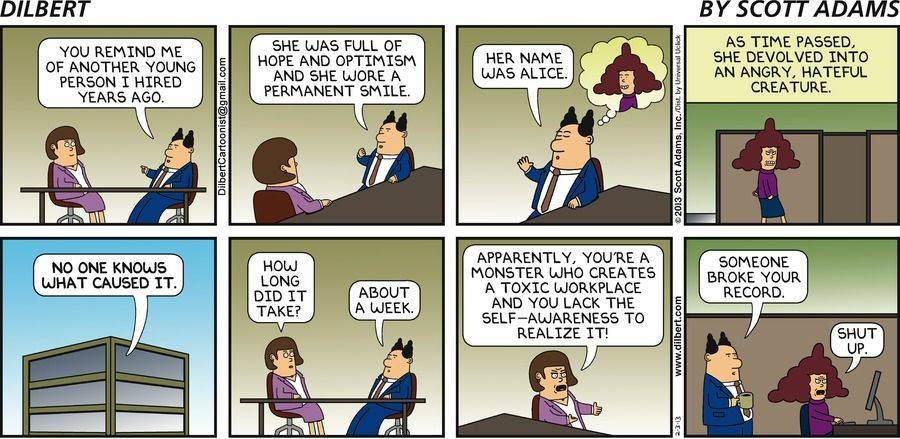
-
Absence of Regular & Effective Feedback
Insufficient feedback or a total lack of feedback can drown a workplace into a toxic environment.
Employees should know what’s expected of them, what they are doing right, and what they should improve or discontinue altogether.
They should also be clear about how to align their job responsibilities with their company’s goals, mission, and vision.
When these things don’t happen, employees start working in different directions and there’s disharmony. It descends into chaos and the environment becomes toxic before they realize it.
-
No People Management Strategy
People management is an essential subject for the human resources department. It basically deals with the end-to-end processes and best practices involved in talent acquisition, training, growth & development, employee retention, and succession planning.
But when there’s no clear-cut employee management strategy in place, employees take the form of an untended herd of animals. It becomes easy for them to stray from a path of performance and productivity.
It’s the breaking point at which you see a toxic culture at work raising its ugly head. This is because of employee disengagement, demotivation, decreased productivity, and lack of innovations.
Watch: How to Build a Culture of Innovation
7 Toxic Work Environment Signs You Should Know
There are many telltale signs of a toxic workplace. Some of them may not be that apparent but they are a ticking time bombs. You should be aware of these indications and warning signs to nip them in the bud.
-
Poor Communication
A lack of meaningful communication, either face-to-face or virtual (in the case of remote staff), among employees and between managers and employees is a clear sign of a toxic environment. In such an environment, communications are marked by negativity, anger, hostility, and distrust.
Poor communications like this are often an offshoot of a lack of clarity of expectations, no proper reporting system, and an absence of accountability. When there’s no positive communication or when there is a communication breakdown, a workplace becomes predominantly unhealthy.
-
A Lack of Enthusiasm Among Employees
How employees feel in the workplace about their work, colleagues, and supervisors is another red flag of a toxic environment.
Do they feel demotivated to come to work every day?
Do they find it hard to log 8 hours of work daily?
Do they feel listless most of the time?
If the answers to these questions are affirmative, then a toxic environment is to blame.
Perhaps the employees aren’t getting enough support, appreciation, and incentives at work. In other words, they are most likely working in an employee-unfriendly environment.
-
Mistrust & Rude Behaviors
When people don’t trust or treat each other respectfully, it speaks of an underlying toxic atmosphere. Such a situation stalls progress and success.
In such an environment, employees tend to focus more on exercising authority and spreading rumors than building sustainable relationships with people. Incidents of bullying and harassment are also common in such an environment.
Similarly, managers spend most of the time highlighting failures rather than achievements and judging the employees rather than trying to understand their issues.
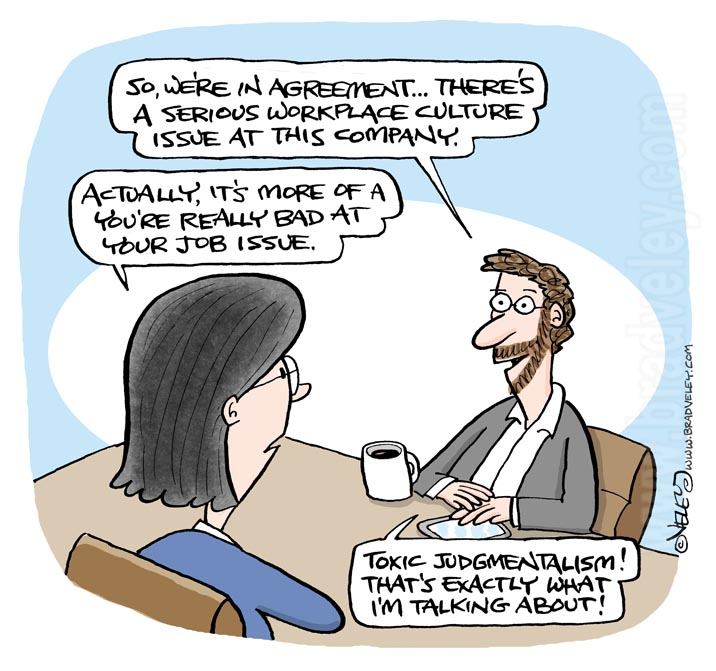
-
High Employee Turnover
Employees with good intentions don’t last in a toxic workplace. Such organizations register a high employee turnover due to the prevailing negative and tense atmosphere.
There is no work culture, employee assistance program (EAP), or good policies and practices. On the contrary, employees are often made to work overtime, and suffer from stress and burnout.
All this leaves employees dissatisfied and always looking for an exit a few months after they are hired.
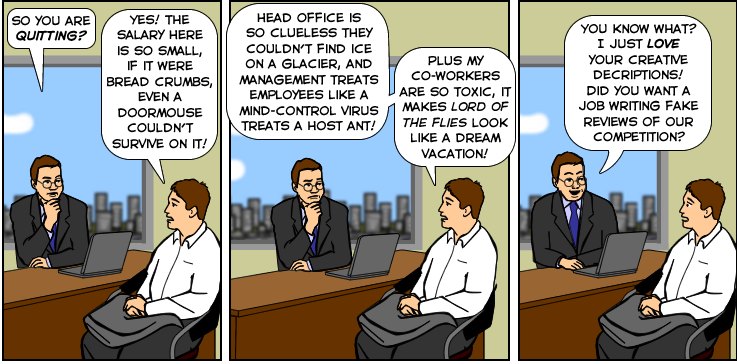
-
Poor Work/Life Balance
Another apparent sign of a toxic work environment is a poor work/life balance. Employees are expected to work beyond their normal shifts and answer emails and calls any time of the day. Piling responsibilities and little to no concern for employees’ well-being make an organization toxic.
This disequilibrium or imbalance throws everything out of gear and ultimately affects employee productivity.
-
Favoritism
Sometimes some employees receive special treatment from the higher-ups and undeservingly so. It can be in terms of job promotions, privilege leaves, or any other facility. When there is no workplace equality, the atmosphere soon gets spoiled.
It demoralizes other employees and breeds resentment because favoritism due to one’s proximity to top management is unfair and unethical.
This is another sign that toxic work culture is at play.
-
Stifled Creativity & Autonomy
At a healthy workplace employees are always encouraged to use their creativity to overcome daily work challenges and solve business problems. For this, they are given the liberty to act at their discretion.
But in a toxic workplace, employees don’t get such rights. Their voices remain unheard. Since there is no room for exercising creativity and using one’s own judgment, employee independence, self-reliance, and decision-making are non-existent.
Employees are discouraged from stepping out of the line, and all directions should come from the top management.
You now know what a toxic work environment is, what it looks like, and what causes it. In the next section, you’ll learn how to handle such a workplace.
Fix a Toxic Work Environment with Better Training
Create a culture of respect, communication, and positivity.
How to Deal With a Toxic Work Environment
Understand and implement the following best practices to prevent or control a toxic work environment.
-
Enforce Workplace Policies
Office policies are not meant to be on paper only. In addition to having well-defined policies, you must enforce them so that employees follow them in letter and spirit.
Your policies can be on code of conduct, sexual harassment prevention, workplace diversity, equality & inclusion, ethics, or conflict management.
Communicate these things to your employees right from the onboarding stage. Let them know the significance of these regulations and what they will face in case of non-compliance.
Remember, a healthy workplace is possible only when employees at all levels strictly adhere to such do’s and don’ts.
-
Conduct Employee Training
Regular employee training & development is a solution to many workplace issues, such as low productivity, absence of teamwork, poor leadership & management, and non-compliance with safety & compliance matters. A toxic workplace is no exception.
You can prevent or at least control a negative and unhealthy work atmosphere through systematic and timely training on toxic workplaces. For such training to be effective, you need access to the right courses and tools.
Let’s elaborate on these two main resources so that you understand their significance better.
-
Online Courses
There are many purpose-built online courses on employee conduct, workplace environment, and policies & procedures. You should use these courses for your employee training as a part of your effort to eradicate toxic elements from the workplace.
Make sure the courses you choose are engaging, up-to-date, and customizable with your existing materials, company policies, and branding.
Look at the following examples of online courses. They are relevant to the topic under discussion and you can use them for workplace training.
Get Free Employee Training Software — All Features, Forever.
We've helped 567 companies train 200,000+ employees. Create courses in under a minute with our AI LMS or use 200+ ready-made courses on compliance, harassment, DEI, onboarding, and more!
How to Create a Positive Work Environment
This course is designed to help you build a conducive workplace that fosters open communication, collaboration, productivity, growth, and positivity in all spheres. Understand the healthy habits discussed in the course and cultivate them for a better work environment.
Watch: How to Create a Positive Work Environment
Understanding the Code of Conduct
A toxic workplace always traces its origin to poor code of conduct. Develop a model code of conduct for your employees using this course. Know appropriate and inappropriate behaviors and how to apply code of conduct standards to your workplace. The course also discusses the methods for reviewing best practices.
It’s best to make employees understand the code of conduct expected from them right from the time they are being onboarded and conduct refresher training some time down the line or if required.
Watch: Understanding the Code of Conduct | Training Course Introduction
How to Build an Ethical Work Culture
Company culture influences how employees behave and treat each other. A positive culture builds trust and supports growth. Find out how to build a strong organizational culture based on ethics. Know individual and collective responsibility in building a sustainable & ethical climate.
Watch: How to Build an Ethical Work Culture
Diversity, Equity & Inclusion
A training program on DEI is essential to building a tolerant, respectful, and cohesive workplace. Often, a toxic working environment results from an absence of these attributes. This course can help you build a diverse and inclusive workplace. It discusses the steps to achieve workplace diversity.
Watch: What Is Diversity, Equity & Inclusion? | Training Course Introduction
Employees Discipline Training
Indiscipline in the workplace can breed chaos and turn the environment toxic in no time.
This course aims at helping participants build a disciplined workforce with the right disciplinary actions. Learn about common disciplinary issues in the workplace and how you can address them as a manager or supervisor. It takes you through the steps and methods to achieve the desired results.

Skills to Resolve Workplace Conflict
Workplace conflict can kill peace of mind and productivity and make the atmosphere tense and hostile. To avoid this, you need the skills to resolve workplace conflict.
This online course is specially designed with that end in mind. It can equip you with effective strategies to deal with conflicts, such as active listening and proper communication. Build a conflict-free workplace by not letting it come in the way of productivity.
Watch: What Is Workplace Conflict Resolution Training? | Course Introduction
Workplace Communication Training Course
Good communication is key to employee collaboration, teamwork, engagement, transparency, and productivity. All of this can neutralize the toxic atmosphere in the workplace.
Poor communication leads to miscommunication and delayed communication, affecting workflow and employee morale. Take this course to bridge gaps in organizational communication.
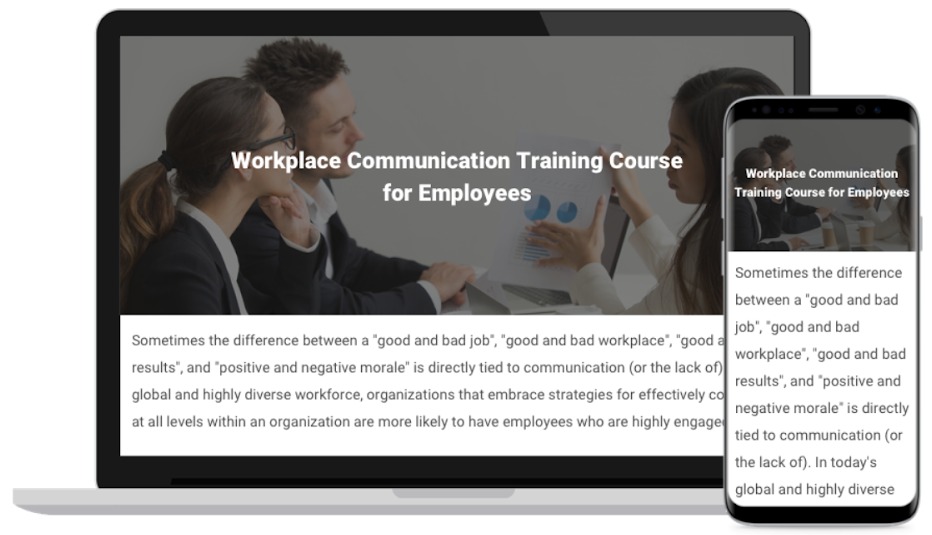
Sexual Harassment Training Course
Like bullying and intimidation, sexual harassment, whether verbal or physical, can traumatize the victims and make a workplace terrible. Regular sexual harassment prevention training is mandated by federal and state governments.
This course on online harassment training for employees and supervisors meets both the requirements at both levels and can help keep your workplace safe. It’s designed by legal experts to overcome incidents of harassment and retaliation.
Watch: Federal Sexual Harassment Training Course
Core Leadership Skills
Whether you’re a first-time manager or a veteran C-suite executive, you need certain leadership skills to overcome the daily challenges of managing a team or company. A toxic work environment has a lot to do with the leadership style, attitudes, beliefs, and practices of high-ranking employees.
This course can help you master the timeless leadership skills to think, work, and lead others better. Among other topics, it discusses the importance of emotional intelligence, communication, and vision & planning in leaders.
Watch: What Is Core Leadership Skills Training Course
Team Building Activities
Team building is an integral part of any organization. By building a productive and strong team, you encourage members to work together instead of against each other.
Team building is also a precursor to great teamwork that promotes a cohesive work environment. This course discusses everything you need to know about team-building activities.
Watch: Team Building Activities
Building Trust With Your Team
One of the main reasons for a toxic and unhealthy work environment is the lack of trust among employees. That’s why building trust is vital for any business. It affects employee engagement, performance, and productivity.
This online training course shows how authenticity, logical thinking, and empathetic leadership form the basis for lasting trust within a team.
Watch: Building Trust With Your Team
- Training Tools
When it comes to online employee training, courses make a great and essential element — but they are not enough. You also need a platform to create, design, manage, administer, and track them.
This is where a learning management system or simply LMS, comes in.
Watch: What is a Cloud-Based Learning Management System
For example, you need workplace harassment training software with reminder, compliance tracking, and reporting features to deliver training on an important topic like harassment.
Most of them are cloud-based, scalable, and secure. They provide an array of in-demand features that simplify, streamline, and accelerate online learning. Some of them are:
- A library of professionally designed, editable & ready-to-use courses
- Virtual classroom for centralized learning
- Quizzes for assessment
- Multilingual support
- Support for uploading existing training materials
- Mobile & social learning
- Collaboration tools
- Support for multiple instructors
- Learner group management
- Robust reporting & analytics
Since these solutions are hosted in the cloud, they support anytime, anywhere learning on any device. You can even download training resources and access them offline.
The best thing about LMS software is that such tools make learning more engaging with features, such as gamification, video responses for quizzes, polls, and so on.
But how to choose an LMS?
Here are some of the characteristics you should keep in mind while looking for such a tool.
- User-friendly
- Course library for a quick start
- Customization & branding options
- Multilingual support
- Quizzes for accurate assessment of learners
- Multiple content types, including uploading existing resources
- SCORM, Tin Can, HRIS support
- Gamification for maximized engagement
- Custom & granular reports
- Flexible & transparent pricing
- Excellent customer support
These are some of the areas you must consider while shopping for an LMS. While most of them support these features, you’ll find some variations in them. So, the best way to approach them is to first identify your training needs and select a platform that can fulfill them.
Watch: How to Choose the Best LMS Software for Employee Training
- Surveys
Regular and constructive feedback from employees is a must to know the state of affairs in the workplace. You can learn about their achievements, concerns, setbacks, challenges, and aspirations through feedback. It also sends out a clear message that employees do matter in business decision-making and they feel heard.
The best way to collect feedback is through an online survey-making tool. The leading ones on the market provide ready-to-use templates and questions, making it easy for users to ask any questions, any way they want. They enable you to create surveys that participants would love to respond to, no matter what they do and where they are located.
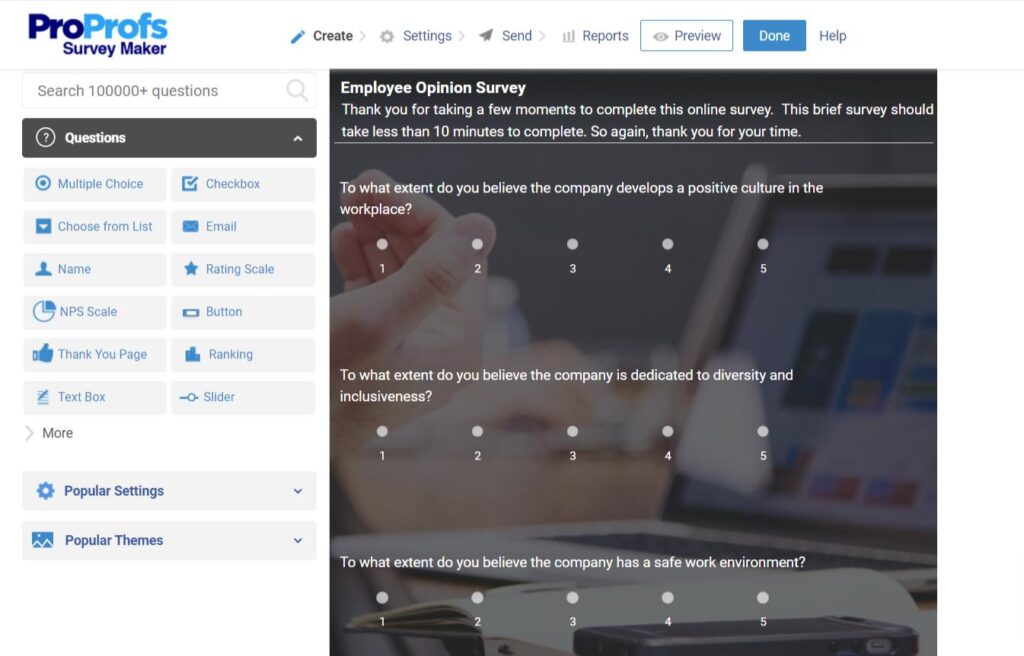
Want to Know Employee Pulse? View Similar Surveys
Engaging surveys like this can help you make more employee-centric workplace policies for a positive culture. Even if there are some unhealthy or negative practices in the workplace, you can know about them through regular surveys and take remedial actions.
In other words, through surveys, you can gauge the overall feeling of your employees, their daily experiences, and your workplace atmosphere. If you sense your workplace is toxic, you can swing into action and prevent it from worsening.
Watch: How to Create a Survey Using ProProfs Survey Maker
- Anonymous Reporting
Another effective way to deal with a toxic work environment is to put in place an anonymous reporting system. Many a time, victims of sexual harassment fail to come forward and report cases fearing retaliation. Such inactions only compound the problem.
Anonymous reports can be filed either by a victim or a witness. But first there should be some reporting for authorities to take action.
Without such a provision, companies stand to lose crucial information due to under-reporting. This can negatively impact employees and business reputation.
Reporting on anonymity removes the bottleneck from timely reporting and emboldens employees to report any unethical, unhealthy, or unsafe practices in the workplace.
Here, a tool such as AllVoices can help you. It’s an employee feedback management platform you can use to identify, investigate, manage, and track workplace issues in one place. It empowers employees to speak up anytime, anywhere with anonymous reporting.
A Toxic Workplace Case Study
Before we wrap up, here’s a case study of a hospital with complicated toxic work culture and the kind of interventions that addressed the issue.
The hospital (name withheld for privacy purposes) was operating under a highly toxic system. They included the following:
- Discrimination during hiring. No diverse recruitment process, resulting in under-representation of minority communities
- Poor relationships with patients and their family members
- Low level of employee engagement and satisfaction
- Poor leadership
- Poor work culture
- Resistance to change among employees
- High turnover rate
All this created issue after issue, hampering day-to-day operations and earning a bad reputation. That’s when the hospital realized it had to do something to put its house in order before it was too late.
Get Free Employee Training Software — All Features, Forever.
We've helped 567 companies train 200,000+ employees. Create courses in under a minute with our AI LMS or use 200+ ready-made courses on compliance, harassment, DEI, onboarding, and more!
How the Hospital Finally Overcame It
The hospital initiated an employee engagement program to boost employee morale, change their attitudes and behaviors, and make them feel valued. It educated them on why resistance to change is counterproductive.
It also conducted regular leadership coaching sessions to not only achieve desired goals but also manage the hospital better. These programs taught them how to take less stress and improve the work environment and culture through innovative leadership & management practices.
The hospital investigated the causes of rising dissatisfaction and turnover levels among its staff as it created a concern for quality care for patients. It transpired that the staff was over-exerting themselves due to a skills shortage and the stress level was high. The hospital then recommended its HR department recruit more people after analyzing the shortage.
To combat cases of discrimination in the hiring process, the hospital held compulsory classes on anti-discrimination policies and diversity & sensitivity for its recruitment staff. This was intended to ensure diverse representation across different communities.
Similarly, it delivered interpersonal skills training to its customer-facing staff to cultivate better relationships with patients and their relatives.
By implementing these measures, the hospital saw:
- better leadership
- improved culture
- improved engagement & job satisfaction among employees
- lesser turnover
- overall organizational success
Fix Toxic Work Environments for a Healthier Organization
A toxic work environment can breed stress, burnout, anger, and chaos due to its negative nature. It also kills productivity and makes a workplace difficult to manage.
There’s no reason to ignore these warning toxic work environment signs. The sooner you address them, the better for your employees and organization.
Along with steps like surveys, anonymous reporting, and enforcing company policies, employee training can go a long way in curtailing an unhealthy atmosphere in the workplace.
Such programs educate employees and supervisors on how to detoxify a toxic work culture. For this, using the right training courses and tools matters.
Implement the best practices discussed in this post and build a healthy, peaceful, and cohesive workplace. This will direct your employees’ minds to the right things through an ideal code of conduct. Be proactive about toxicity in the workplace and prevent it from getting worse.


 We'd love your feedback!
We'd love your feedback! Thanks for your feedback!
Thanks for your feedback!








